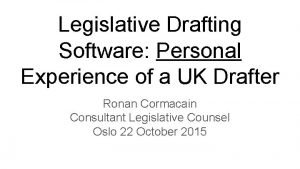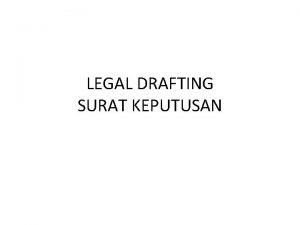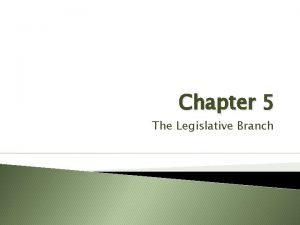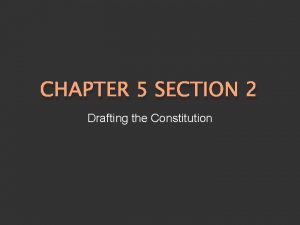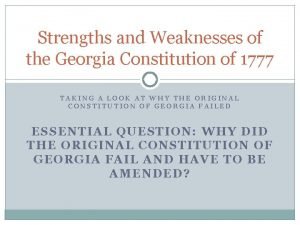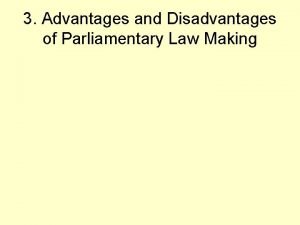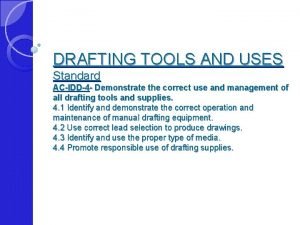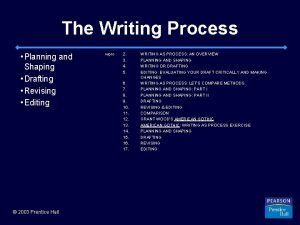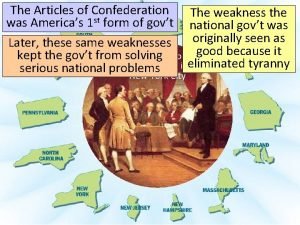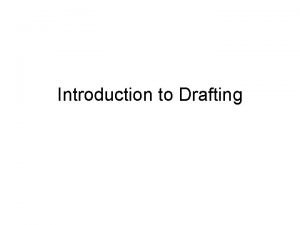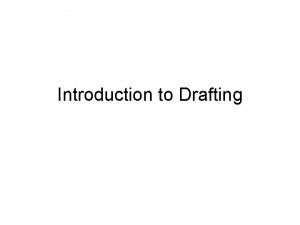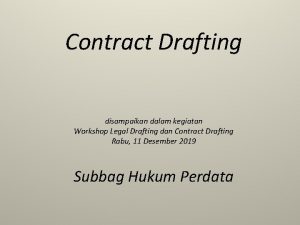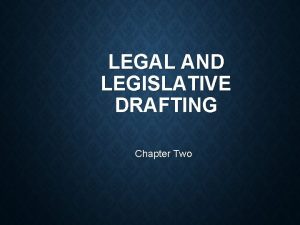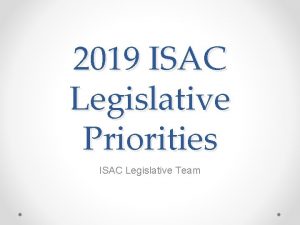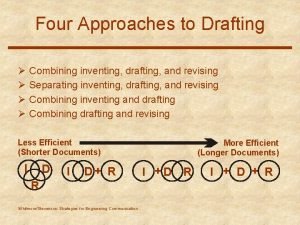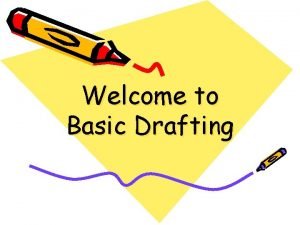LEGAL AND LEGISLATIVE DRAFTING Chapter one CHAPTER ONE

















- Slides: 17

LEGAL AND LEGISLATIVE DRAFTING Chapter one

CHAPTER ONE INTRODUCTION TO LEGAL DRAFTING 1. Meaning of Legal Drafting is the art of formulation and preparation of legal documents such as: legislative bills, contracts, pleadings, charges, conveyance and letters.

2. Nature of Legal and Legislative Drafting Legal drafting is an art and it can only be attained, as any other art, after practicing it with clear understanding the principles of legal drafting and the language that drafter uses to convey the idea through the legal document.

3. Significance of studying Legal Drafting - Legal drafting involves with the practical aspect of the lawyer’s work; - It is the means of legal communication among legal practitioner; and - It enables lawyers to equip themselves the skills and arts to use language and writing skills effectively.

4. Types of Legal Documents There are many types of legal documents which is drafted for different purposes. The most known legal documents include: Bills, letters, internal memoranda, operative documents and forms, legal pleadings, and Legal briefings.

I. Bills or draft laws A bill is a draft law purposed to the parliament for enacting, amending, or repealing a statute. II. Letters These are the letter that a lawyer communicates to his client, to opposing parties, to the court, to witnesses, to government agencies for purposes relate to a legal matter.

III. Internal Memorandum This is an interoffice memorandum used by lawyers in a firm to explain how the law applies to the client’s case. Internal memorandum is an objective writing to the client’s case and it’s the starting point of the lawyer to consider a case when he is referred to him. It also serves a background for further research on the case or drafting legal pleadings.

Preparing internal memorandum: Internal memorandum is writing in a formal way by using the rule of IRAC which stands for the following: - Identification of the issue - Rule of the law which is applicable - Analyses of the facts - conclusion reached.

IV. Operative Documents Many documents have, as a result of their language and content, legal effects beyond the mere transmission of information because they create legal rights and obligation. Contracts and deeds are examples of operative documents that lawyers draft and they attend to define property rights and performance obligations as the case may be.

V. Pleadings pleadings are formal document filed with the court and establish the claims and defenses of the parties on an issue or a controversy. pleading is essential for the disputed parties before the court as they using it to communicate with court and the judge to tell the story from their side. Its crucial that pleadings is drafted clearly and accordingly with the law.

VI. Legal briefs A brief is a formal written argument presented to the court, usually countered by a brief written of the opposing party. The brief is official record of a lawyer’s request to the court. The Legal Brief is one of the strongest tools in a lawyer’s weapon when persuading a judge on his position whether he has to take an action or not.

Purposes of Legal brief: v informing purpose – the brief informs the judge the legal issue and the laws that are relevant to it. v persuading purpose – legal brief persuades the judge to see the lawyer’s argument as right argument through developing what is called “theory of the case” which serves for the interest of the lawyer’s client and also weakens the opponents in the case.

Parts of the legal brief: The legal brief contains the following part or heads which are essential to draft legal brief to be presented to the court or a judge: a. The caption b. The statement of facts c. The issue of the statement d. The argument e. Prayer for relief

A. The caption contains the following: - name of the court; - name of the parties; - title of the document; and - case number B. The statement of facts the statement of facts in a legal brief contains background of facts and legally significant facts which is needed to persuade the judge and present “theory of the case” from the client’s side which makes the brief subjective unlike

C. The issue statement The issues in a legal brief are those questions that the court must answer in order to reach a conclusion on the case. The content of the issue statement should include reference to legally significant facts along with reference to the rule of law by using one of the following format: “under-does - when” format “whether” format; and “multi-sentence” format.

D. The arguments The argument section is where the lawyer makes his actual legal arguments. In lawyer’s argument, there has to be a goal that the lawyer wants to achieve with the support of facts and legal rules. An argument should be structured in a way that presents the broad issue and the specific issue of case which could support the lawyer’s argument and his persuasion of the judge to produce his judgment in favor of his client.

E. The prayer for relief is the final section of the legal brief. It simply serves the purpose of requesting the court to the relief that your client wants. The legal brief should be dated and signed by the lawyer or his client. End. Any Questions or comments?
 Legislative vs non legislative powers
Legislative vs non legislative powers Legal drafting software
Legal drafting software Contoh diktum
Contoh diktum Chapter 5: the legislative branch answer key
Chapter 5: the legislative branch answer key Chapter 5 section 2 drafting the constitution
Chapter 5 section 2 drafting the constitution Georgia constitution of 1777 strengths and weaknesses
Georgia constitution of 1777 strengths and weaknesses Legislative, executive, and judicial,
Legislative, executive, and judicial, Judicial activism examples
Judicial activism examples Advantages and disadvantages of parliamentary law making
Advantages and disadvantages of parliamentary law making Organizing and drafting business messages
Organizing and drafting business messages 20 drafting tools
20 drafting tools Drafting lines and symbols
Drafting lines and symbols Shaping and planning process
Shaping and planning process Exercise on noting and drafting
Exercise on noting and drafting Inspire drafting and design
Inspire drafting and design Non legislative duties of congress
Non legislative duties of congress Art 289 tfeu
Art 289 tfeu Legislative branch
Legislative branch

